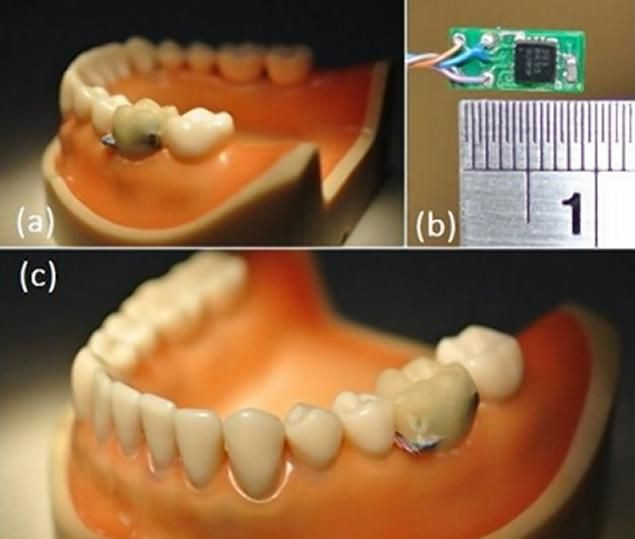Tooth Sensor Tracks Eating, Drinking, Smoking Habits With 93.8% Accuracy: Could It Lead To Better Health?

If counting calories seems like too much work, consider letting a new tooth sensor keep track for you.
The new sensor, which was developed by scientists at National Taiwan University, uses Wi-Fi to sync with a person's smartphone and keep a daily record of the wearer's eating and drinking habits, along with smoking, coughing, and speaking. At less than a centimeter long, the sensor relies on "unique teeth motions" to differentiate each activity.
The wireless sensor would sit between two teeth and be held in place with glue.
"Because our mouth is an opening into assessing the health of the human body, it presents the opportunity for the placement of a strategic sensor for detecting human oral activities," the team wrote in its report. "The detection of human oral activities can enable numerous health care applications, such as food and fluid intake monitoring."
Tests on the sensor had it hardwired to the computer; however, once the product becomes available to the public, users can sync the device to their smartphone via Bluetooth capabilities.
Users will probably need to remove the sensor on a consistent basis, the researchers surmise, in order to clean the device and recharge it, similar to how one would maintain an electronic toothbrush.
Safety still stands out as one of the chief concerns when using the sensor.
"All electronic components must be sealed securely and tightly," researchers noted, due to the placement inside the mouth. "In the event that the sensor units are mistakenly swallowed, they will pass the human body without causing any harm. Its safety requirements are similar to those of capsule endoscopy, in which patients swallow a camera pill."
In their tests, the scientists connected the tracker to a string so the participants couldn't swallow it. The accuracy rating across each varied movement totaled 93.8 percent.
While the team's future plans have not yet touched on the use in nutrition apps for smartphones or other measurements of personal health, the scientists noted a few goals they'd like to reach before the product becomes widely available.
"First, we will design the next prototype, which will be integrated with wireless communication and battery recharging capabilities. Second, we would like to improve the accuracy of our system's activity classification," they wrote. "Finally, we will continue working with dental collaborators to improve the safety of our system."
Published by Medicaldaily.com



























